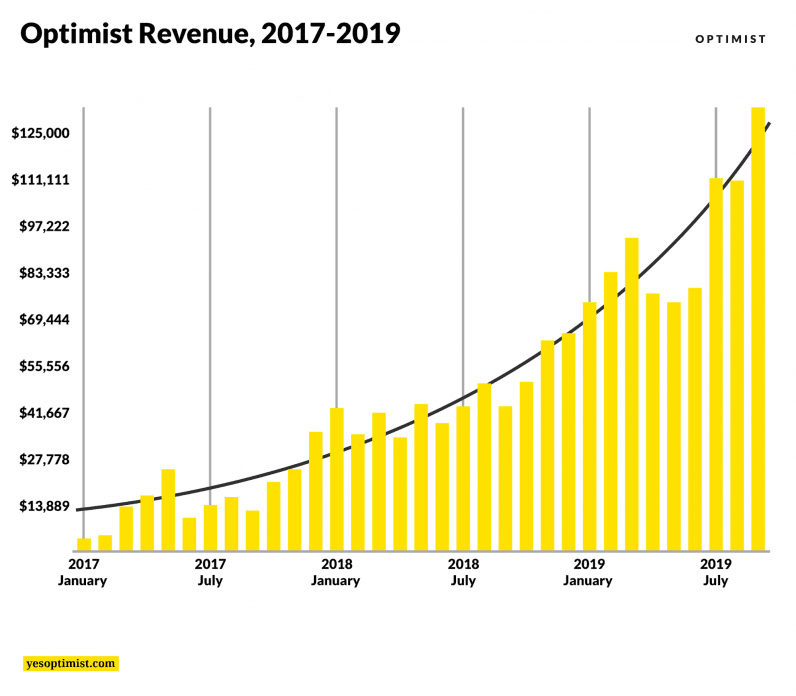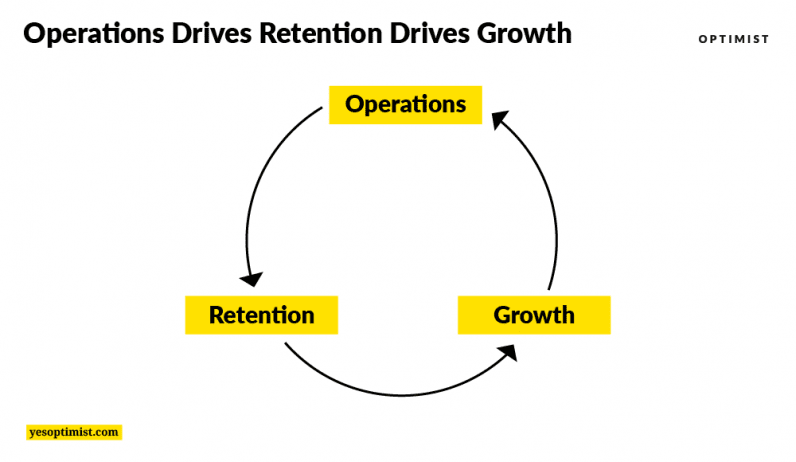I had a vision for the company, how it would work, and how it would grow. But, to be honest, if you had asked me about the level of success we’ve achieved over the last three years, I would have said it was probably a pipedream. As we sit today, we’ve built a service business that generates about $1.5 million in ARR. From beginning as my own personal freelancing work, we’re now a 22-person content marketing agency working with more than a dozen clients. One of the things that’s most rewarding for me each year is sharing what I’ve learned (and, often, the mistakes that I’ve made.) After the first year in business, I started a tradition of heading to Reddit to offer an open Q&A for other business owners and aspiring entrepreneurs. Every year, I take the time to reflect, share my learnings, and then answer questions about how we’ve built Optimist and what’s happened along the way. The results are interesting. Each year, I would say, the questions that dominate the conversation:
How do you get clients? How do you close sales? How do you do marketing?
People attribute our growth and our success to our ability to do marketing and sales. That’s what they want to learn from me — is how to replicate our success in these areas to drive their own business growth. But, here’s the truth. Optimist’s success has been built on retention more than sales. An estimated 70% of companies don’t make it past their 10th year. My hypothesis is that many of these companies focus on bringing in new customers and don’t pay enough attention to the ones they have.
Growth looks sexy
Looking at a chart that shows a nice upward trend — maybe even an exponential curve — has a nice, pleasing feeling. And it validates that the work you’re doing is making an impact. But achieving growth is more about doing the boring work — getting the nuts and bolts right, automating the time-consuming tasks, and scaling processes. Over the life of Optimist, we’ve partnered with around 30 companies. Our current workload includes about 16 clients, meaning the majority of all clients that we’ve worked with still work with us to this day. In fact, in our 36-month timespan, our average tenure for retainer clients is more than 20 months. And, we only sign a few new clients every quarter. Our growth is not due to a Herculean marketing and sales effort. Our company has grown because we keep clients with us for a long period of time. We foster relationships and focus on driving results for them. That means that we don’t need to constantly go out and find new revenue.
Operations drives retention drives drowth
As I unpack our growth each year and take stock of what’s worked and what hasn’t, I always find myself struck by the findings that I share with others. Not only is our growth driven by retention rather than sales and marketing, but that retention is driven by the nuts and bolts of the business. It’s the decidedly un-sexy work that keeps clients with us. Retention is driven by operations — getting things right. Operations is about building repeatable and scalable processes that customers can rely on. It’s about identifying the systems that work when you have two clients and recognizing that they no longer work when you have 10 customers. Then, reimagining the workflow to make it into something new and different. Lastly, operations is about eliminating the busywork that tends to burden growing companies. Paperwork and processes can become all-consuming timesucks if they’re not managed properly, and that can distract from the day-to-day operations that are so critical to growth. For me, this has meant taking stock of my time and energy and identifying the work that has burdened my creativity or kept me working late into the night. I’ve identified several key ways to reduce my personal workload so I can focus on the day-to-day operations and big-picture strategy of our firm.
Documenting new client processes and workflows to make sure it’s clear and consistent Automating team and HR tasks like onboarding, paperwork, and tax documents Streamlining finance and bookkeeping to make sure everyone gets paid without spending hours processing and paying invoices Delegating and distributing work like recruitment to other members of our team who can help evaluate and choose the best-fit candidates Investing in training and education of our team so there isn’t a single source of failure and people rely on me less to answer questions or clarify strategy
What I’ve realized is that these operational pieces, while often considered afterthoughts, are really the heart of our growth strategy. Optimist has been successful because we’ve taken the time to dig in and carve out the nitty grit parts, not in spite of it. As I reflect on my learnings and answer questions, I keep coming back to this simple truth. Just doing the work is so much part of our process and our culture. It’s what has made us successful. Creating a team wiki doesn’t feel as sexy and fun as booking a new sales call, but it’s just as important — or more so, I’d say. Moreover, it’s truly the prerequisite to growth. Basically, don’t focus on filling up the bucket if you haven’t plugged the holes first!

